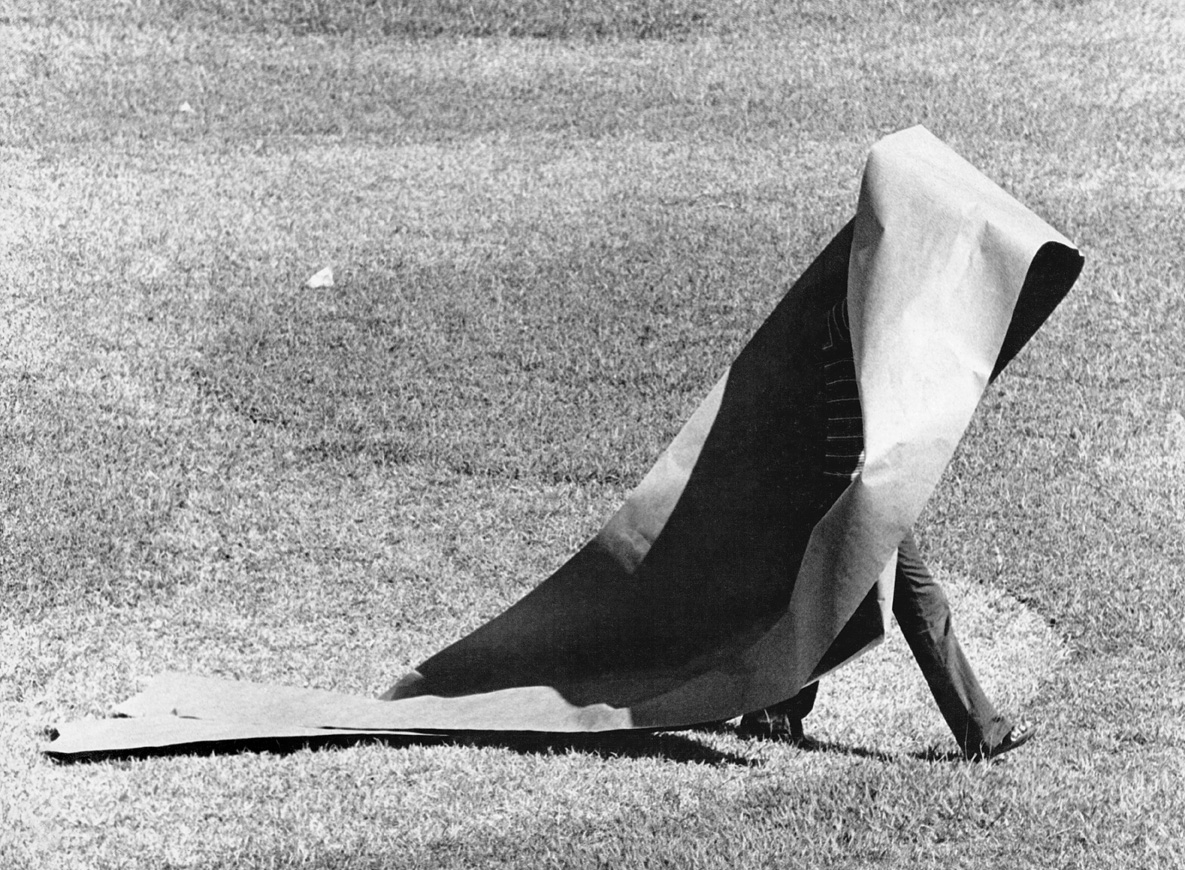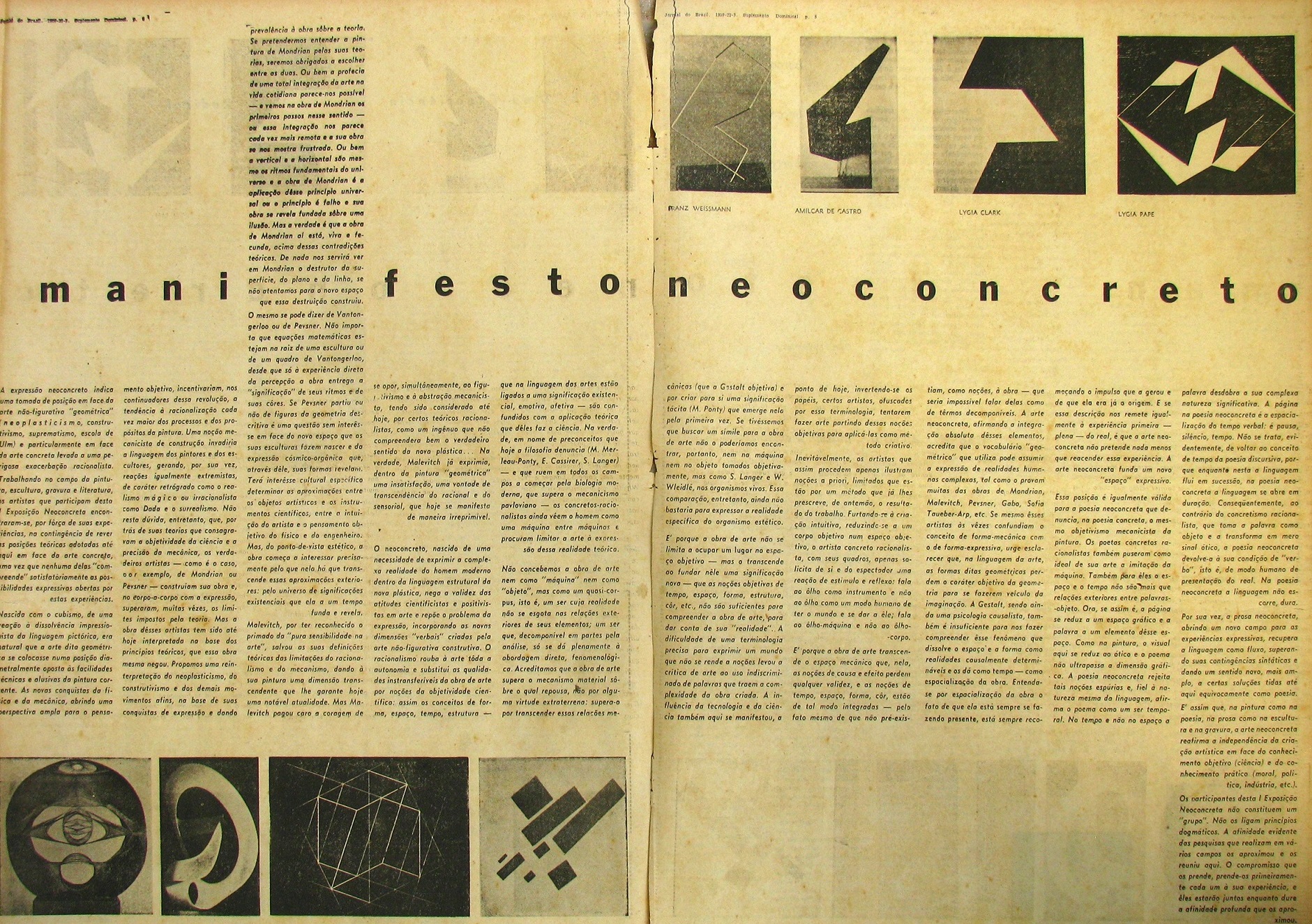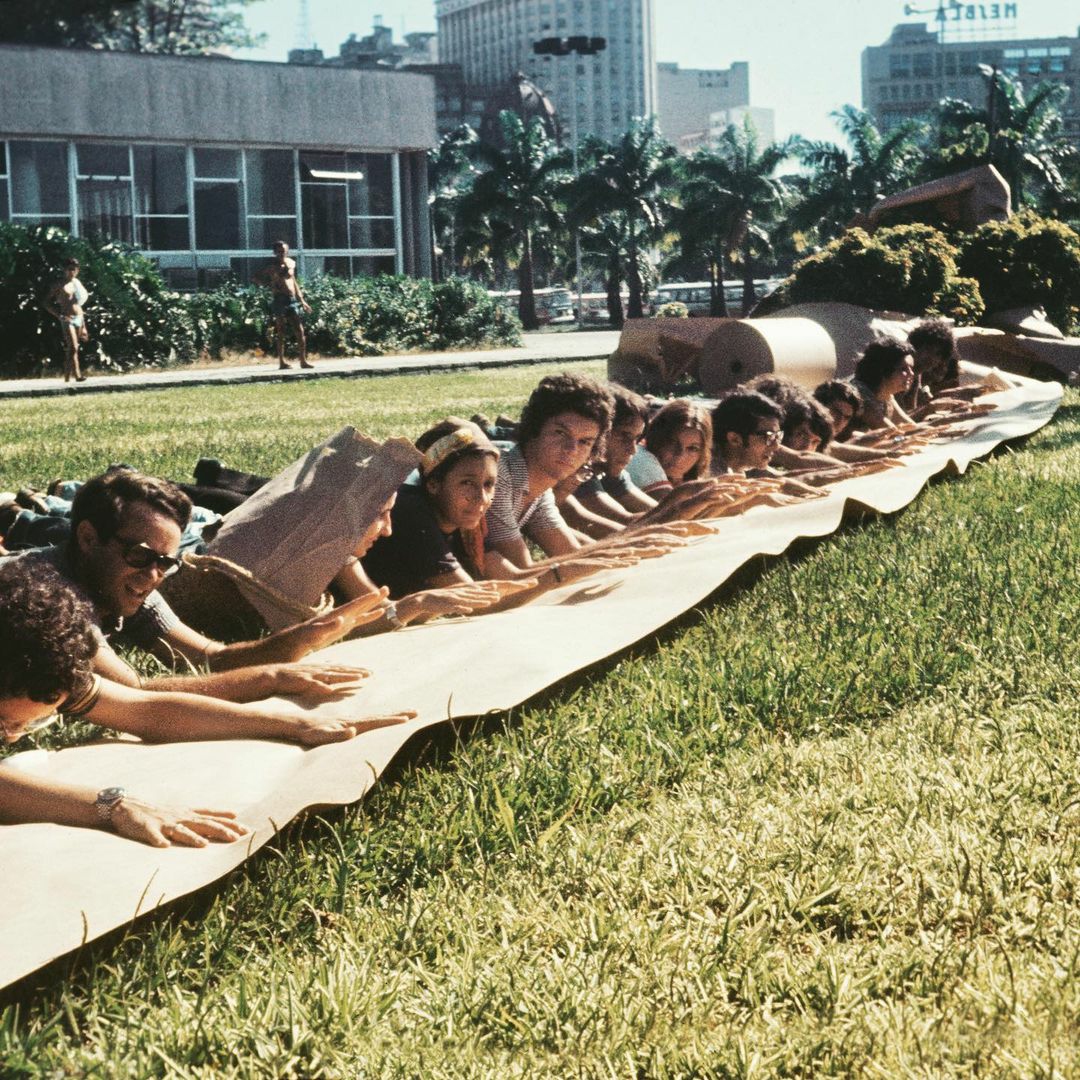Ana Clara Simões Lopes: Anna Bella, I realize that your artistic practice occurs in tandem with your teaching practice, so I would like to start this interview with a question that seems to me as simple as it is fundamental: What is the relevance of the pedagogical dimension, that is, of your constant performance as an artist and as a teacher, for the development of your work?
A Search around the Center
03/08/2023
Ana Clara Simões Lopes talks with Anna Bella Geiger about her learning experiences with her fundamental teacher Fayga Ostrower, her reminiscences as a young artist of the abstract movement in mid-20th-century Brazil, and her anecdotes about the educational experiences developed at MAM-RJ, which were key in later developments of the art-education-museum relationship in Latin America, such as the ‘Domingos da Criação’ [Sundays of Creation], the Jornal do Brasil, and ‘Atividade Creatividade’ [Creativity Activity].
Anna Bella Geiger (Rio de Janeiro, Brazil, 1933): multidisciplinary artist and professor of Polish-Jewish ancestry and professor at the Escola de Artes Visuais do Parque Lage. She is widely known both for her early abstract works and for her pioneering incursions into video art and installation, as well as for her commitment to the development of courses and educational programs in museums and universities. In her works, Geiger addressed themes that revolved around the socio-political climate in Brazil toward the end of the 20th century, through reflections on colonial policies, geographical borders, and cultural stereotypes.
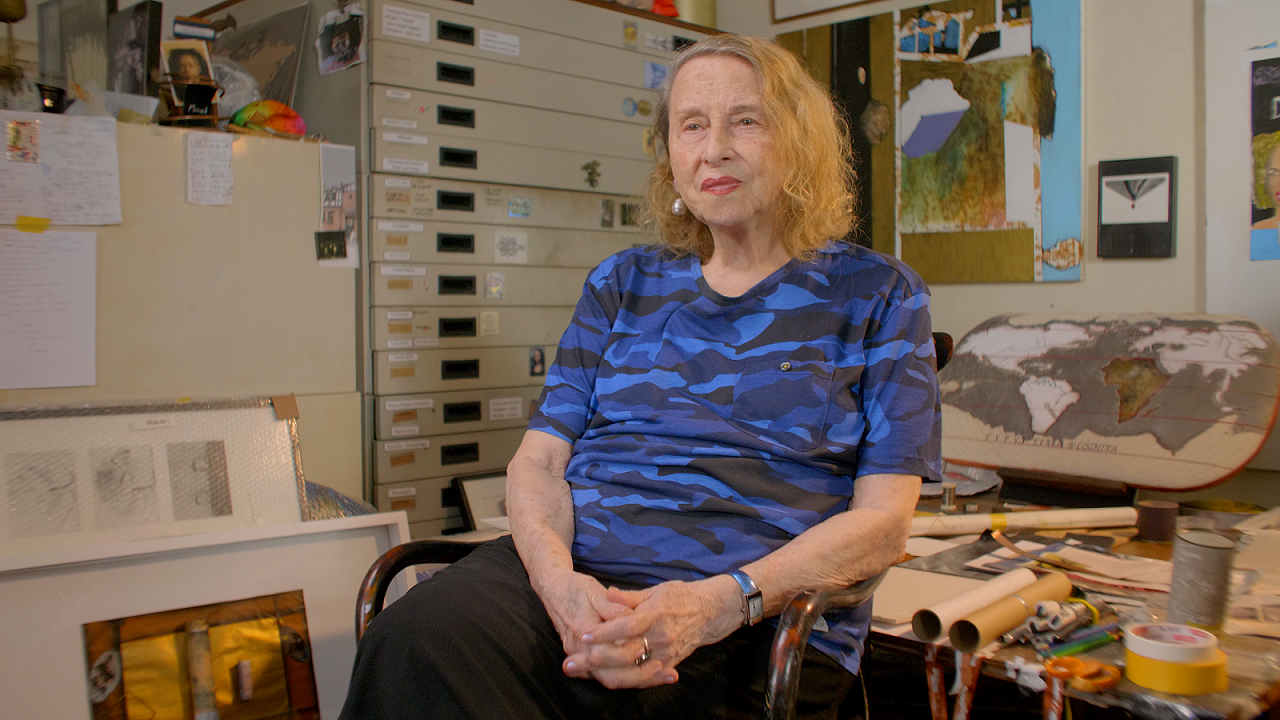
Anna Bella Geiger: I could expand on this question with a lot of information. Yes, I agree that I have a parallel, almost concomitant, sustained pedagogical role with which I work as an artist. My training as a visual artist took place in the atelier of teacher and artist Fayga Ostrower. This was in 1949 when I was about 16 or 17 years old, and I approached her to get to know her through family connections. That’s why in these conversations I always bring out the matter of how chance, luck—good and bad—are present in our lives, the same as legacies. In my case, these legacies are cultural, because they arise from this knowledge. In 1949, Fayga already had a procedure as an artist, a very profound graphic work, and a teaching that mixed, in her own recipe, Bauhaus with the influence of German figurative expressionism.
She was German and she came to Brazil. But it was an influence that, when placed in the context of the history of Brazilian art, in that same period—the first half of the 1950s—you have artists like Goeldi and many others who also followed, in a totally introjected way, as a political matter and a question of art, the topic of German expressionist figuration. In Rio, in São Paulo, and also some in the south, considered figurative art—the human figure—to be the essential element. The meaning of art had only such an expression that dignified the human being. Of course, there was the socialism of art, all these ideas that also came from the former Russian school, plus the Germans... This influence, if you see it from a historical perspective, is present in all of Latin America, and it also took on some artists from New York. Then, the very development of professor Fayga's work, in 1949, 1950, 1951, was dramatically transformed in her work into abstractionism. But there weren’t books to explain how abstractionism was done, nor painting, nor what abstractionism was... So, that way of transposing her own work, from figuration to what would become abstract art, is linked to the understanding that the artist is a political being and that a very specific art is political. As her disciple, I grasped all that thinking.
At the beginning of 1953, in February, it was the Carnival, opened the first Brazilian exhibition of abstract art. If, on the one hand, this milestone was so important, on the other hand, were all the exponents who later followed other tendencies, moving more towards the geometric, such as Décio Vieira, Lygia Clark, Lygia Pape...
After all those courses, I traveled. I traveled very young; it was crazy. I said I had to go live in New York, where there was abstract art. At that time, I was studying at the National Faculty of Philosophy, which is where I decided to invest the effort of my studies, separated from the art in Fayga's course, which was a course for the rest of our lives. No one else, neither Pape nor Décio, had the need to study further, in the sense that the unveiling of this process was done by ourselves and other artists.
Everybody was inventing things in modernity. They called it 'special didactics,' and it was the greatest didactics within the rigors and also the socializing thought of education for all; it was not demagogy.
So, when I went to New York, I stayed there for two and a half years, and then returned to the National Faculty of Philosophy. All this comes mixed with my personal life: I met Pedro Geiger, who is a geographer, a Marxist... Mário Pedrosa was a close friend of mine; he would come to my house and I was already working on my abstract projects, but he didn’t come to ask for my work. He didn’t even touch anything, I didn’t show him any of it, he came because he wanted to talk to Pedro about that moment—it was the sixties. They say that Fayga together with Mário Pedrosa made the PT [Labor Party], right? The first PT of ideas, in the area of culture, of art...
Since you introduced Mário Pedrosa in the conversation, I’d like to take the opportunity to ask you about ‘Atividade Criatividade’ [Creativity Activity], which was this course that you taught at the Museu de Arte Moderna (MAM) in 1971, together with Lygia Pape and Antonio Manuel, and this course was inspired by the concepts developed by Mário Pedrosa, who at that time, if I’m not mistaken, was already exiled in Chile. I think it’s also important to mention that this course inspired the ‘Domingos da Criação,’ which became so widely known; I think this fact is not recognized enough. So I would like to know, what was the experimental program you were proposing at Atividade Criatividade and what was the idea of education you wanted to try there?
I was at MAM, and Carmen Portinho invited me to teach there, so what I did at home between 1965 and 1966 ended up having repercussions. I started with a very simple thing of introduction to drawing. In 1968, 1969, I was still processing my courses at the Bloco de Eu Sozinha at MAM. But in 1970, Aluísio Carvão was there as coordinator. It was a very democratic environment, Ivan Serpa was there painting, and these things were workshops. There were changes in the personal processes of these people. And then in 1970, there was Frederico Morais, who was a critic in Minas, who claimed to be a film critic, but became the coordinator of the courses.
In conversations with him is when the special didactics that were latent came to my mind, but that doesn’t mean that I came up with theories, because theories are not for art but an application of a social, intelligent way of raising issues, just as art does. I did that for five years and then I began to have a crisis, which I now understand: I had a crisis before, when I became abstract. Behind that was the issue of the dictatorship: what to do? Back then, there was a certain way of coming together and thinking without exposing anyone.
We began in 1970 and designed a total program, which we launched in the newspaper—I think it was Correio da Manhã, maybe later in Jornal do Brasil. The course was a very serious thing and we departed from the idea that we could not have artists who only came with a suitcase on Fridays to paint a little bit. No. The people who signed up had to be available the whole week. Every day, we would put those people who signed up to learn engraving, sculpture, whatever, because we were also going to make a selection. And those students would have to swear to come every day, because we weren’t going to give a free course for everyone to be skipping it. A lot of people signed up, so we started a special art didactic, which was on Fridays, all afternoon. I was available too, even though I didn't earn a penny; it was all very crazy, I was living in poverty. Two groups were coming together: the experimental unit and Frederico’s. The students who begin to show up in this madness are names like Cildo Meireles, Guilherme Vaz—a musician, a genius.
In January, Lygia Pape began to teach at the National School of Architecture. She managed to fit in there as a teacher and we would meet from time to time, and there were always disagreements because she followed concrete and neo-concrete abstractionism. What united us was something much bigger instead, which was what we learned together. So it was always like that, until the end of Lygia; we would create disagreements.
This is very important because Lygia was not at MAM, she already had the university. Antonio Manuel was a friend of hers... So, I met with Lygia outside because Frederico didn't talk to her. I didn't want to know these things, I never asked, I don't want to know. But Pape was always linked to Mário Pedrosa. Me too, because he wrote about my work, we had another way of proceeding. But I called Lygia and told Frederico: I want to invite Lygia to teach a summer course with me. And also with Cildo, because as a student, we could already see that he was interesting; so I asked that we let him do another composition. And so, at that moment, Lygia, Frederico, and I got together at MAM, and we said: let's do a course.
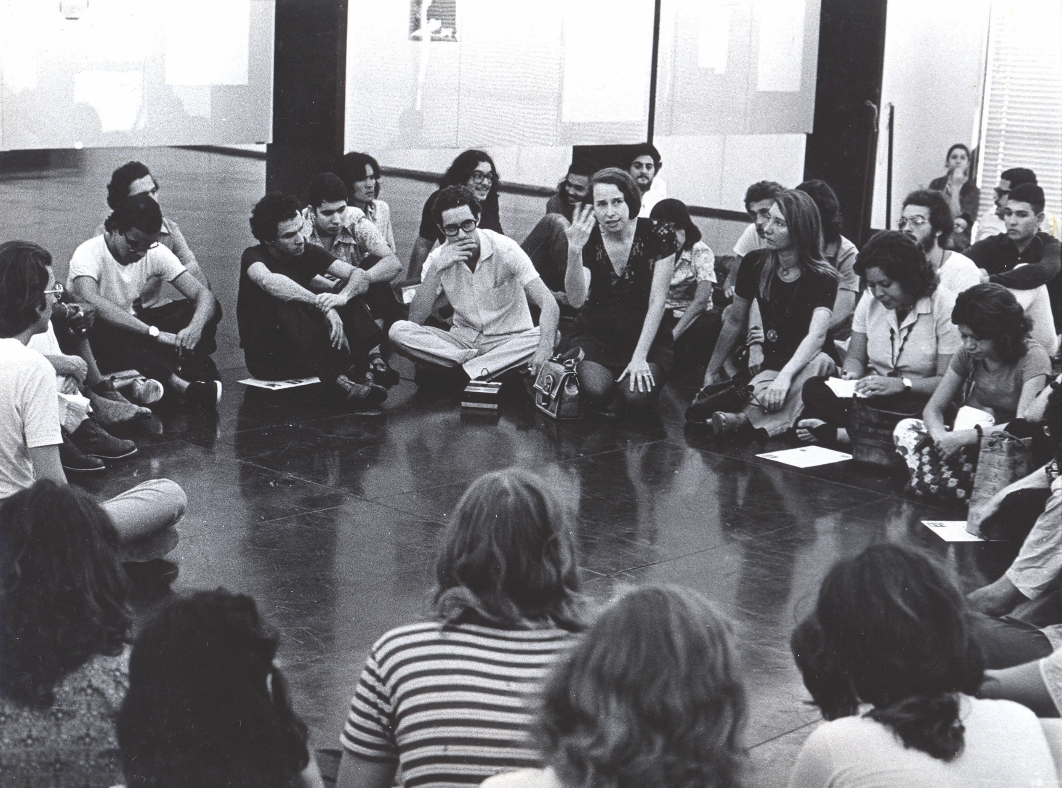
Then Frederico asked, but how is the course? Because he was the coordinator. Frederico wanted to control things, so Lygia and I teamed up there and said, I don't know, the course is anything, with any material. Things seemed so distant. In fact, we, or I at work, unlike Lygia, were already within the conceptual issues, without reading any theory, without having written anything about that, we were already talking about the dematerialization of the object and how it didn't matter. So, what is the dematerialized object? I didn't know either. We told Frederico, who didn't understand: It's anything, whatever you find on the road, in the garbage or I don't know, wherever they’re bringing the materials from.
Anna Bella, I'm going to take the opportunity, now that you talked about your courses as an axis that always accompanied your artistic work. Because I realize that throughout your career, you invested a lot in blurring, let's say, the separation between the artistic process and the pedagogical process. And for me, the abolition of this separation between these two types of processes reaches a critical point in Circumambulatio, which you made at MAM in 1972. I would like you to tell us a little bit about the process that landed in this program. In Circumambulatio you are already approaching this idea of ‘center’ which, to me, seems to be very important for the development of the ideas of ‘polarity’ in the Lunars and in your later works. So I wanted to ask you, what did you learn in Circumambulatio that made you want to go deeper into the ideas of center and polarities in later series?
Besides Circumambulatio, there is my domestic side, of being married to Pedro Geiger, who is a geographer, a researcher, in addition to being a person linked to Marxist ideas; he was very close friends with Milton Santos, they worked together, and there was an international guy, David Harvey, who was thinking the same as Pedro in relation to what geography is. And then suddenly I have these reports inside my house—because Pedro was teaching, for a period of three years in a row, half a semester at the Sorbonne. What was he there to teach and what was he there to discuss? They were focused on teaching the subject of urbanism in geography, which was totally unprecedented because geography goes into other things... and Pedro then stays with these people, working and publishing the Sorbonne reports... And I started reading these reports at the same time that... In 1970, two years before, after the man went to the Moon, I said, My God, if I could only get these pictures of the craters! Because I wanted to turn these craters into a place... It's very similar to Circumambulatio, a place where the territory... the man is there on the Moon, and from there, from that territory, I could talk about the dictatorship here.
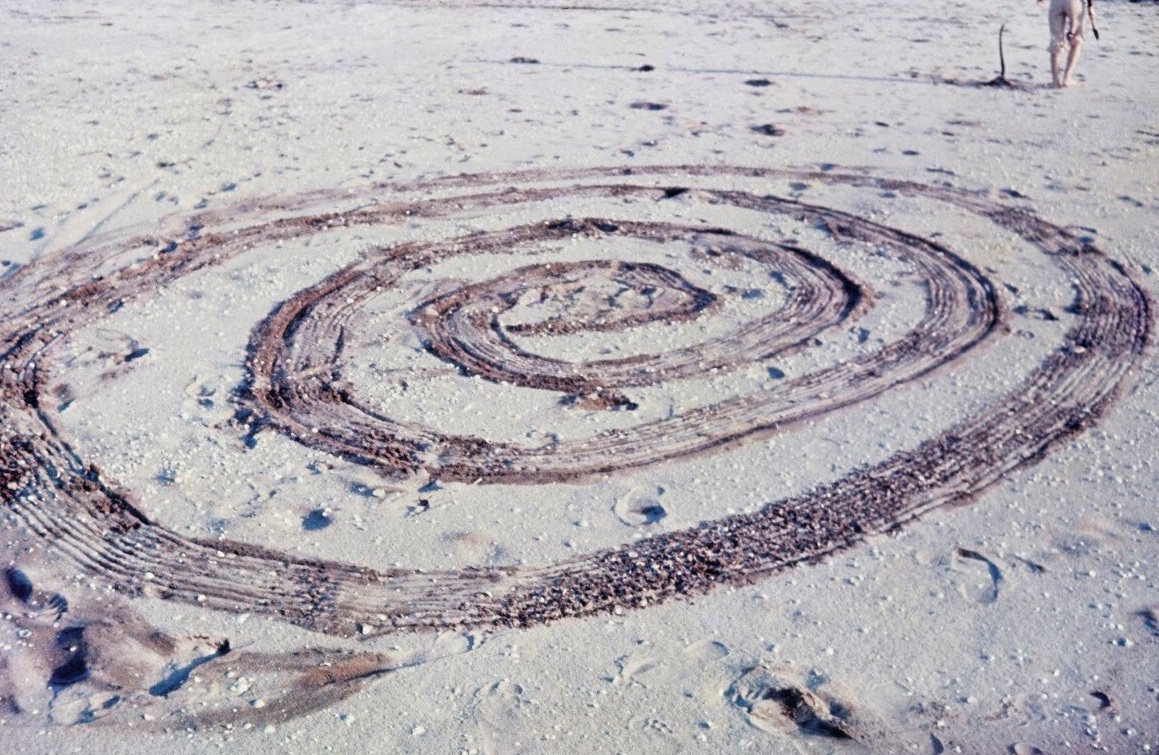
So I went to the Consulate to look for some and they gave me many images—both correct and incorrect—that showed the problems of the lunar surface. Then, from the reports, from the geographical studies, emerged the terms ‘center’ and ‘periphery,’ as they are, of course, used in discussions regarding the urban perimeter... I am talking about two terms that are in polarity, and so it starts in my head, let's say, a philosophy of polarity. Then, among the photos of the Moon, I see some that are crossed out and I say, they’re saying that this one is wrong, the other one that is not crossed out is the right one. Then everything comes together and I begin searching for a way to say right or wrong from the surface, like saying: Look, we’re here suffering, but we don't know what it is, you’re wrong. Some very metaphorical messages. I think I have always worked in a non-pamphleteering way in my work; I have always been very critical with art—not with the art of others but with my own pamphleteering art—more like wanting to send messages.
So much so that when I go into Brasil nativo/Brasil alienígena [Native Brazil/Alien Brazil], still in the seventies, it brings about the Indigenous people—those who are native—and the non-natives, which are all of us who somehow came by boat, from Africa or Portugal or Poland, or wherever. Why don't we have the right to vote? And that's the main thing, to fight for it, men, women, black, white… That makes me constitute Native Brazil, but there are other metaphorical comparisons of women working, me imitating... sometimes I imitate, sometimes I take it seriously. So it's all kinds of jokes, native Brazil and foreign Brazil, which due to this more polar thinking I understand as native/alien.
And there's a didactic there, I see that I'm always wanting to teach: look, we are here. Both we and the natives are... we can't look at culture in a democratic way, we can't do this, we can't do that.
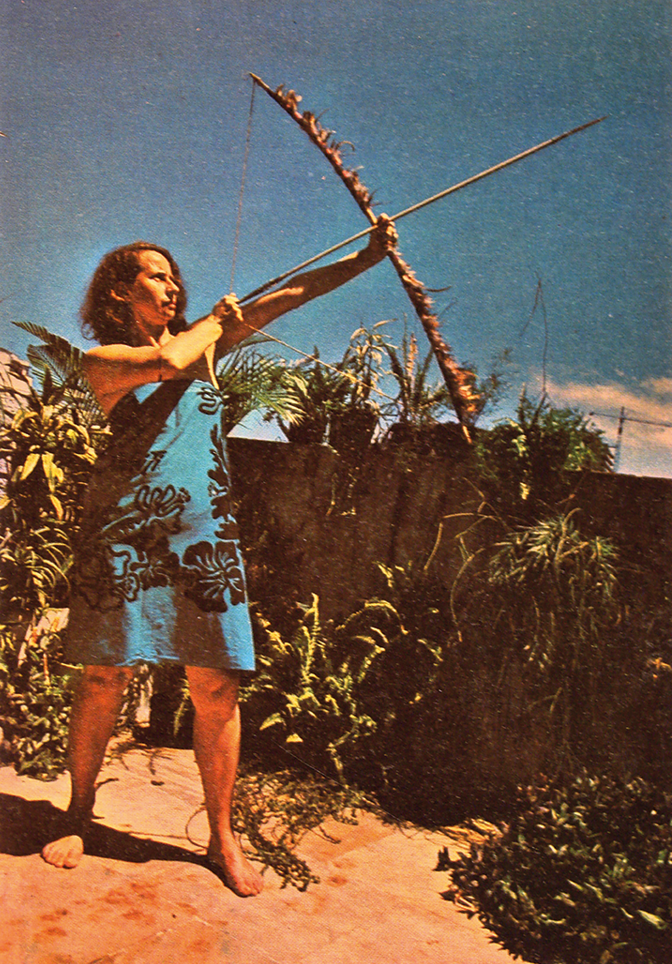

That goes for other works of mine as well. Even before this one, I did another one called História do Brasil: Little Girls & Little Boys. I think this one, in terms of the indigenous topic, is much more striking. Because when I take this androgynous figure (that's how I wanted it) and place those collages of indigenous teenagers in its eyes, I'm not joking. I’m saying, look what happens to the Indians in these places—Mato Grosso, the Amazon—where the daughters of these people are prostituted or sold, the boys too. And then it added up to a film I saw, which had a truck driver that was taking things here and there around the Amazon... And then there's a young girl, a prostitute, and she asks him to take her... "protect me," she tells him. It's incredible, the film is so poetic.
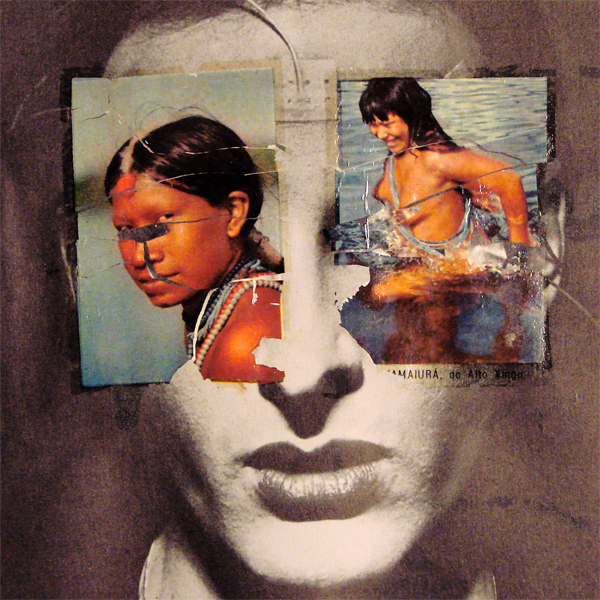
Afterwards, of course, we were afraid to participate in festivals, but I sent it to MoMA and they go on and translate it. So, now people know: the Brazilian artist makes a video, be prepared! I don't know if I'm closing, but what is this didactic? I am not a special didactic. I didn't create it in writing, but now I see this way of teaching, of transmitting the analysis of the work of people from other contexts, about gender... Today, people have prejudices... I have been working with this since the 1950s when I would draw children and washerwomen with Fayga. That is coming back now, but with the emerging artists of this generation. Some are influenced by the issue of prejudice, addressed by Afro-Brazilian artists, and some are very strong, very interesting. I have my analyses, but that is only what contemporary issues can address.
